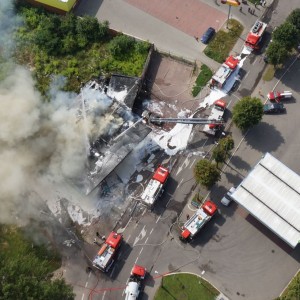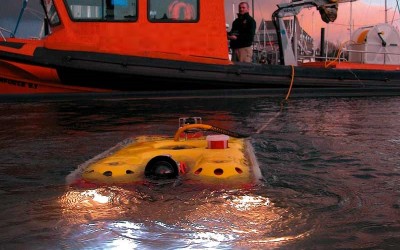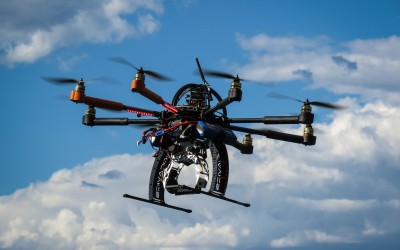Monitoring of accidents and fire



We cooperate with fire brigades, the police and other emergency services like TOPR on a daily basis. We report live from the air to the person in charge of the situation. This procedure helps the firefighters and rescue workers reach the specific place with no threat to life and health or bring the fire under control knowing which way it spreads.
What is the procedure?
There are two people of the RovDrone team coming who arrive on location (a pilot and an operator). Their task is to get the drone up in the air as fast as possible (5 min. on average) to transmit live streaming video. The pilot’s objective is to keep the drone in a safe position vis-a-vis the obstacles (smoke, fire, blasts). The operator, on the other hand, is focused on obtaining the most precise video images.Such a labor division enables the person in charge of the rescue operation by providing constant cooperation with the operator (pilot is taking care of the flight’s safety) and get close-up images of specific objects or people in order to improve the rescue operation!
Why choose us ?
- Monitoring of accidents and fires throughout Poland,
- UltraHD 4K video image quality with live video feed,
- Highest quality FLIR brand thermal camera images,
- Recording the video material from the conducted inspection for further analysis,
- Additional security in case of flying over people
- In case of emergency, thanks to our fleet of planes and helicopters we are able to get to any location in Europe within a few hours.
Drone monitoring advantages:
- Safety – Advanced security systems preventing the drone’s falling down on people,
- Cost saving – Drone monitoring is cheaper than filming from a helicopter maintaining the same image quality,
- High mobility– Monitoring of accidents and fires using drone offers much more opportunities in opposition to traditional aircraft or crane monitoring,
- High quality monitoring– our trained pilots are able to fly into inaccessible places extending the monitoring area.
- The best thermal imaging equipment– using highest quality thermal imaging cameras we are able to detect and locate the hot spots.
Drone monitoring disadvantages:
- Short flying time -due to low battery durability requires coming back to the starting point every 15-25 minutes. However, we have a lot of batteries as well as a mobile recharging station to ensure the consistency of the monitoring.
- Weather restrictions– considering relatively low weight of the drone and considerable amount of electronic elements we must not fly when the wind’s speed exceeds 18 m/s, when it’s raining or snowing.
 EN
EN  PL
PL NO
NO

